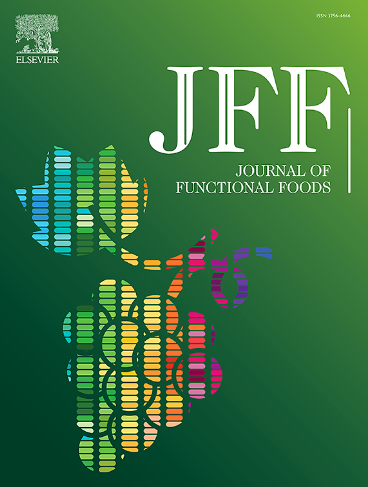Protective mechanism of quercetin nanoliposomes on hydrogen peroxide-induced oxidative damage in 3D Caco-2 cell model
IF 3.8
2区 农林科学
Q2 FOOD SCIENCE & TECHNOLOGY
引用次数: 0
Abstract
Quercetin is a flavonol that is widely distributed in plants. Although quercetin has good antioxidant activity, the exact mechanism is still unclear in intestinal cell model. In this study, a 3D Caco-2 cell model was constructed. An oxidative damage model was then established. Compared with 2D cell models, 3D cell models are more similar to the in vivo microenvironment and more sensitive to external stimuli. Quercetin and its nanoliposomes significantly increased intracellular SOD, GSH-Px and CAT activity and the T-AOC, and reduced ROS, IL-8 and MDA levels to exert antioxidant effects (P < 0.05). Moreover, the antioxidant effect of the quercetin nanoliposomes was superior to that of quercetin. Quercetin nanoliposomes can regulate the oxidative genes HO-1, Keap1, and Nrf2, activating downstream antioxidant enzymes and upregulating GST, NQO1, and Keap1 protein expression. Quercetin nanoliposomes protect cells from oxidative stress through the Nrf2 pathway.

求助全文
约1分钟内获得全文
求助全文
来源期刊

Journal of Functional Foods
FOOD SCIENCE & TECHNOLOGY-
CiteScore
9.60
自引率
1.80%
发文量
428
审稿时长
76 days
期刊介绍:
Journal of Functional Foods continues with the same aims and scope, editorial team, submission system and rigorous peer review. We give authors the possibility to publish their top-quality papers in a well-established leading journal in the food and nutrition fields. The Journal will keep its rigorous criteria to screen high impact research addressing relevant scientific topics and performed by sound methodologies.
The Journal of Functional Foods aims to bring together the results of fundamental and applied research into healthy foods and biologically active food ingredients.
The Journal is centered in the specific area at the boundaries among food technology, nutrition and health welcoming papers having a good interdisciplinary approach. The Journal will cover the fields of plant bioactives; dietary fibre, probiotics; functional lipids; bioactive peptides; vitamins, minerals and botanicals and other dietary supplements. Nutritional and technological aspects related to the development of functional foods and beverages are of core interest to the journal. Experimental works dealing with food digestion, bioavailability of food bioactives and on the mechanisms by which foods and their components are able to modulate physiological parameters connected with disease prevention are of particular interest as well as those dealing with personalized nutrition and nutritional needs in pathological subjects.
 求助内容:
求助内容: 应助结果提醒方式:
应助结果提醒方式:


